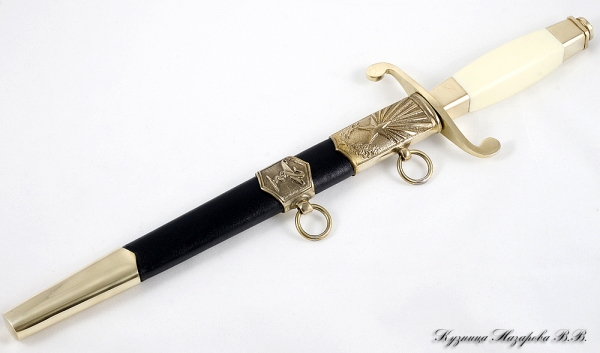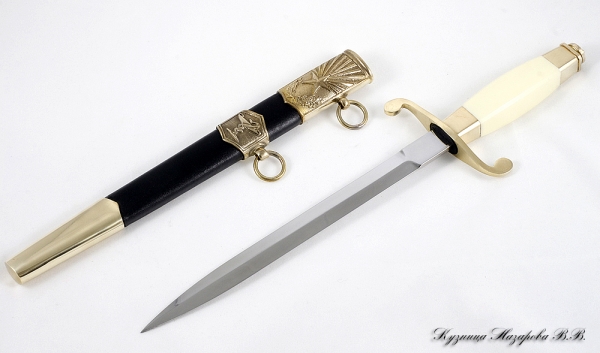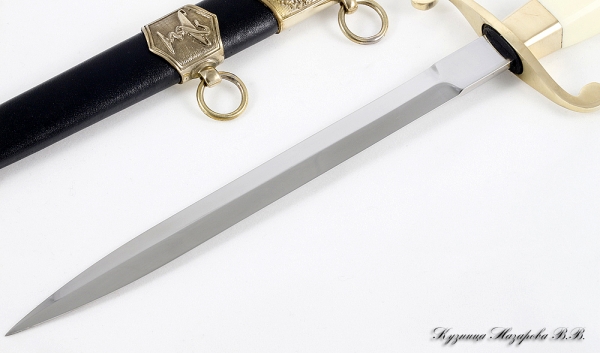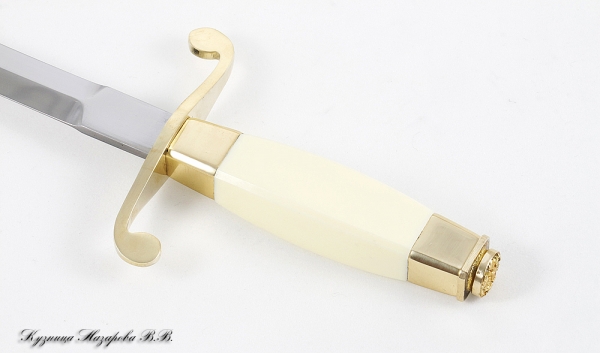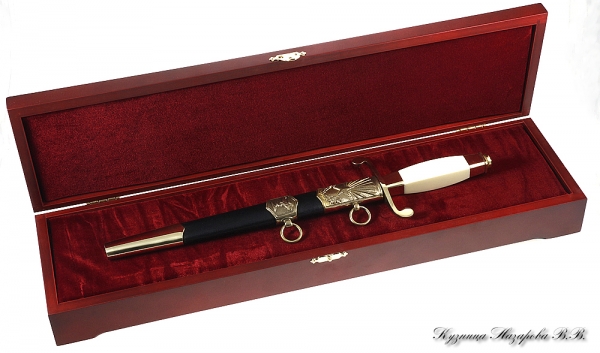- Главная
- Ножи ручной работы
- По типам ножа
- Кортики сувенирные
- Офицерские кортики
- Офицерские кортики
- Medical Service Officer's Dirk
* Возможны незначительные отличия от фото (рисунок на лезвии/рукояти).
Medical Service Officer's Dirk
Medical Service Officer's Dirk
- Форма клинкаКортик
- Blade steel tipe65x13
- Lengtn blade (os)205 mm
- Witdth blade (os)15 mm
- Толщина клинка3.5 mm
- Lengtn handle (os) 15 mm
- Hardness (HRC)25
- Product weight, gram320
- SheathPlastic, brass
Detailed analysis of the properties and features of the knife
- Blade steel: 65X13 is a corrosion—resistant steel of domestic production, popular among Russian craftsmen. It is characterized by good anti-corrosion protection and "unpretentiousness" in care. However, with a hardness of HRC 25, the blade turns out to be relatively soft, which reduces its wear resistance and cutting abilities, but adds elasticity and resistance to chipping.
- Blade shape: dirk is an elongated narrow blade with a length of 205 mm and a width of 15 mm. This geometry is traditionally associated with stabbing and ceremonial purposes. The dirk was created more for ceremonial and representative purposes than for everyday or utilitarian tasks. Due to its classic shape, it has a recognizable aesthetic, referring to the military and historical heritage of the officer cutlasses of the medical service.
- Handle: The material and color are not specified, but the length of the handle should be taken into account — 15 mm, which is probably an error or inaccuracy. For most adults, the grip will be uncomfortable, unless it is a decorative miniature version of the product. The shape and materials of the handle strongly influence the comfort of holding, stability in the hand and safety when working, especially in difficult conditions.
- Blade thickness: 3.5 mm is a reliable margin of safety for a narrow blade, which ensures shape retention even under light loads, but with a small blade width, this is mainly an aesthetic characteristic.
- The scabbard: They are made of plastic and brass, a practical combination for a ceremonial dirk: plastic protects the blade from moisture and dirt, brass elements emphasize the status and visual appeal of the product.
- Resistance to moisture and corrosion: Thanks to the 65X13 steel, the blade is well protected from rust and does not require special care, even when stored in conditions of high humidity.
- Wear resistance, durability, maintenance: Low hardness (HRC 25) reduces the wear resistance of the cutting edge, the knife requires more frequent sharpening during use. At the same time, sharpening is carried out easily and quickly, and with reasonable use, the blade lasts a long time, is not prone to chips and cracks.
Scope of application, advantages and limitations
- Optimal application: A dirk of this type is excellent as a ceremonial or collector's item, a symbol of military or medical supplies, for participation in ceremonial events, reenactments and as a memorable gift.
- Advantages: Excellent corrosion resistance, easy maintenance, historical aesthetics, a combination of plastic and brass in the design of the scabbard, symbolic status and recognizable silhouette.
- Restrictions: It is not intended for heavy work, cutting, chopping, opening hard objects, cutting game or food — because of the narrow and elongated shape of the blade, as well as low hardness. The handle (according to the stated characteristics) may not provide a secure grip for practical use. It is not suitable as a working tool for tourism, hunting or cooking.
Unique features and historical heritage
The officer's dirks of the medical service are not just a knife, but a part of the history and prestige of military medicine. The refined silhouette of the blade and the restrained but expressive finish of the scabbard make this dirk a worthy collector's item and a valuable souvenir for people associated with military or medical service.Care recommendations
- Due to the corrosion-resistant steel, the dirk does not require smearing with special oils or particularly careful storage; it is enough to wipe the blade after contact with moisture.
- If necessary, use fine-grained stones for sharpening: the material has become easy to edit, but due to the hardness of HRC 25, the cutting edge will dull faster if you use a knife even on soft materials.
- Plastic-brass scabbard does not require special care, it is enough to avoid mechanical damage and contamination.
Summary of the final recommendation
This dirk is an ideal choice for collectors, connoisseurs of historical objects, military personnel of the medical service and lovers of aesthetics of military paraphernalia. Its value lies in its status, symbolism, and outstanding appearance, not in the functionality of a working knife. It is not recommended as a practical tool for tourism, hunting, cooking or heavy use, but as a ceremonial, souvenir and iconic item it has a special charm.
There are no reviews yet — yours may be the first.
Help other users with the choice - be the first to share your opinion about this product.






